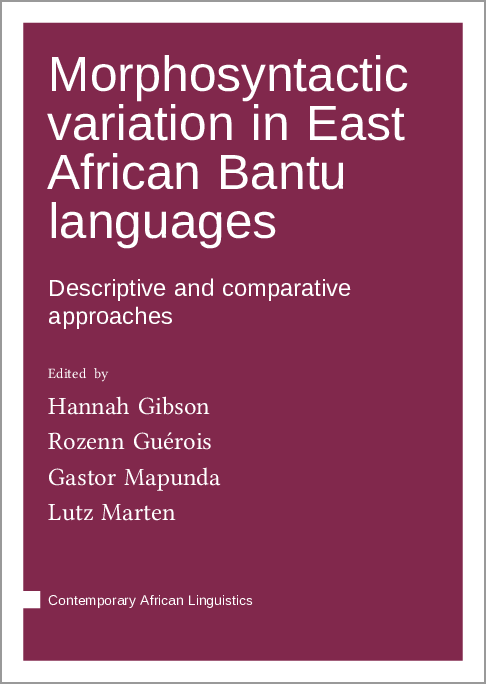We log anonymous usage statistics. Please read the privacy information for details.
Morphosyntactic variation in East African Bantu languages: Descriptive and comparative approaches
Synopsis
The approximately 500 Bantu languages spoken across vast areas of Central, Eastern and Southern Africa are united by the presence of a number of broad typological similarities, including, for example, complex noun class system and agglutinative verbal morphology. However, the languages also exhibit a high degree of micro-variation. Recent work has demonstrated fine-grained morphosyntactic variation across many Bantu languages focusing on grammatical topics such as double object constructions, inversion constructions, or object marking, adopting formal, comparative and typological perspectives.
Continuing in this vein, this volume builds on the momentum of the dynamic field of morphosyntactic variation in Bantu and contributes to the growing body of work which examines morphosyntactic variation, with a regional focus on the Bantu languages of East Africa. The East African region is characterized by high linguistic complexity in terms of the number of languages spoken, in terms of the four different linguistic phyla present, and in terms of the inherent sociolinguistic dynamics.
The current volume explores this complexity further by bringing together studies which investigate features of morphosyntax of an individual language as well as those which develop an in-depth examination of a single morphosyntactic phenomena in a small sample of languages.
The book seeks also to add to the descriptive status of the languages under examination, as well as raising questions relating to language, language contact, language change, and micro-variation in related languages spoken in close geographic proximity.
Chapters
-
Introduction
-
Demonstratives in ChiyaoAn analysis of their form, distribution and functions
-
The structure, distribution and function of demonstratives in Runyankore-Rukiga
-
Concord and agreement in Eastern BantuThe augment and noun classes in Nyakyusa
-
The morphosyntax of locative expressions in Kiwoso
-
A comparative study of the locative system in South-Tanzanian Bantu languages
-
Multiple-object constructions in Ganda (JE15)
-
Object marking in four Mozambican Bantu Languages
-
Verb extensions and morphosyntactic variation in BantuThe case of Sumbwa
-
Tense and aspect marking in Bantu languages of Morogoro region, Tanzania
-
A comparative sketch of TA markers in Kilimanjaro BantuIn search of the directionality of semantic shift and micro-parametric correlation
-
The historical development of the reflexive-reciprocal polysemy in Hehe
-
Morphosyntactic variation in Old Swahili




